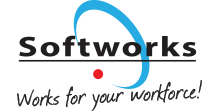In the evolving landscape of business operations, workforce management has become increasingly complex. Organisations are grappling with challenges that impact employee retention, engagement, and overall productivity. The good news? Workforce management software offers innovative solutions to these pressing issues. Let’s explore the top workforce management challenges in 2025 and how technology is shaping the way forward.
1. Employee Retention
The Challenge
Employee retention remains the foremost concern for organisations. The financial and operational costs of replacing an employee—often exceeding twice their annual salary—are substantial. Beyond financials, high turnover disrupts team dynamics and morale. Modern employees seek more than remuneration; they value purpose, growth opportunities, and work-life balance.
The Solution
Workforce management software provides tools like pulse surveys to monitor employee sentiment, enabling HR teams to address concerns proactively. Automated scheduling incorporates employee preferences, skills, and fairness rules, ensuring a positive work-life balance. These features contribute to a more engaged and committed workforce.
2. Enhancing Employee Engagement and Experience
The Challenge
Engaged employees drive organisational success. They are more productive and less likely to leave, yet fostering engagement, particularly in hybrid environments, poses challenges.
The Solution
Workforce management software enhances the employee experience by:
- Standardising policies to ensure fairness.
- Automating repetitive tasks to boost payroll and operational efficiency.
- Providing self-service options for schedule management. These tools simplify daily operations, creating a positive workplace atmosphere and higher engagement levels.
3. Promoting Employee Well-being and Mental Health
The Challenge
Balancing productivity with employee well-being is critical, especially in high-stress industries. Ignoring mental and physical health impacts retention, engagement, and organisational performance.
The Solution
Automated scheduling tools ensure balanced workloads, adherence to labour laws, and equitable shift assignments. Real-time data on overtime, absences, and leave usage allows HR to detect early signs of burnout. Workforce management software thus supports a culture of care, fostering healthier work environments.
4. Skills Development and Training
The Challenge
Rapid technological advances and shifting market demands require continuous upskilling. Organisations must ensure their workforce is agile and future-ready.
The Solution
Workforce management software enables organisations to:
- Track employee skills and certifications.
- Maintain a skills matrix for compliance and development planning.
- Identify gaps through visual dashboards. These capabilities streamline skills management, reducing burnout and enhancing employee satisfaction.
5. Strengthening Diversity and Inclusion
The Challenge
Achieving diversity and inclusion often falters due to biases in hiring, promotion, and workplace culture.
The Solution
With data-driven insights, workforce management software uncovers biases and tracks progress in diversity initiatives. Customisable HR dashboards provide a comprehensive view of workforce demographics, aiding informed decision-making to foster inclusivity.
6. Optimising Workforce Planning and Efficiency
The Challenge
Effective workforce planning requires agility, cost management, and alignment with business goals. Traditional methods are often time-consuming and error-prone.
The Solution
Workforce management software optimises resource allocation with automated scheduling tools. These systems ensure appropriate staffing levels, align labour costs with operational goals, and reduce inefficiencies, enhancing overall organisational performance.
7. Managing Flexible and Remote Work Patterns
The Challenge
As flexible and remote working options grow, managing personalised schedules without sacrificing fairness and productivity becomes critical.
The Solution
Workforce management tools simplify schedule customisation based on employee preferences, availability, and workload. Features like self-service portals and real-time scheduling adjustments promote transparency and employee satisfaction while maintaining organisational productivity.
8. Navigating AI Adoption
The Challenge
AI adoption brings transformative potential but poses challenges such as workforce resistance, skill gaps, and ethical concerns.
The Solution
Workforce management software integrates AI to automate tasks like payroll and compliance tracking. By providing data-driven insights under HR’s governance, it ensures transparency and fairness. AI tools complement human oversight, driving efficiency without compromising ethical standards.
9. Embracing HR Technology and Digital Transformation
The Challenge
Many HR departments still rely on outdated systems, limiting efficiency and scalability. Digital transformation is essential for strategic growth.
The Solution
Modern workforce management software automates manual tasks, improves data accuracy, and enhances decision-making. By streamlining operations, HR teams can shift focus to strategic initiatives, fostering a digitally-driven HR function.
10. Ensuring Regulatory and Compliance Management
The Challenge
Evolving regulations in labour laws, health and safety, and data protection increase compliance complexities.
The Solution
Workforce management software automates compliance tracking, from scheduling and union agreements to data retention. By minimising compliance risks and maintaining accurate records, organisations can focus on strategic growth rather than administrative burdens.
Conclusion
The workforce management challenges of 2025 are both complex and transformative. By leveraging advanced software solutions, organisations can address these hurdles effectively. Beyond operational efficiency, workforce management software serves as a strategic enabler—empowering HR leaders to create dynamic, inclusive, and employee-centric workplaces.
With tools that combine automation and data-driven insights, businesses can not only navigate 2025’s challenges but thrive in an ever-evolving landscape. To learn more about how Softworks can support your workforce management needs, contact us today.










This article provides valuable insights into the current workforce management challenges. It’s crucial for organizations to adapt their strategies to enhance employee engagement and retention. Looking forward to seeing how these changes unfold in 2025!
This article provides valuable insights into the current workforce management challenges and offers practical strategies that organizations can implement to enhance employee engagement and retention. I appreciate the focus on adapting to the evolving business landscape.
This article provides great insights into the current workforce management challenges. I particularly appreciate the emphasis on employee engagement strategies. Looking forward to seeing more solutions discussed!